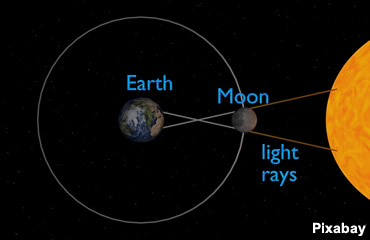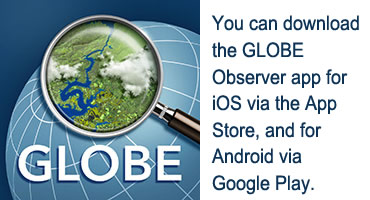Photo: Halfway through the eclipse, anyone within the 70-mile-wide path from Oregon to South Carolina, will experience a brief total eclipse when the moon completely blocks the sun’s bright face for up to 2 minutes 40 seconds.
NASA—yes, the National Aeronautics and Space Administration—is looking for members of the public to participate in a nationwide science experiment by collecting cloud and temperature data from their mobile phones.
And, there’s a free android and iPhone app to help you collect information. It’s the NASA GO or Globe Observer app, which is an abbreviation of NASA’s Global Learning and Observations to Benefit the Environment (GLOBE) Program Observer.
The big news, though, occurs Monday, August 21, when a total solar eclipse will occur across the entire continental United States.
Crossing the country from Oregon to South Carolina over the course of an hour and a half, 14 states will experience night-like darkness for approximately two minutes in the middle of the day.
The eclipse enters the United States at 10:15 a.m. PDT off the coast of Oregon, and leaves at approximately 2:50 p.m. EDT in South Carolina.
 States experiencing the eclipse are Oregon, Montana, Idaho, Wyoming, Nebraska, Iowa, Kansas, Missouri, Illinois, Kentucky, Tennessee, North Carolina, Georgia and South Carolina.
States experiencing the eclipse are Oregon, Montana, Idaho, Wyoming, Nebraska, Iowa, Kansas, Missouri, Illinois, Kentucky, Tennessee, North Carolina, Georgia and South Carolina.
All of North America will experience at least a partial eclipse of the sun.
During the eclipse, NASA’s special eclipse experiment will involve students and citizen scientists in a project that invites users to record observations with the free app.
GLOBE Observer is an easy-to-use app that guides users through data collection.
Using the app and a thermometer, citizen scientists can observe how the eclipse changes atmospheric conditions near them, and contribute to a database used by students and scientists worldwide to study the effects of the eclipse on the atmosphere.
Observers in areas with a partial eclipse, or outside the path of totality, are encouraged to participate as well as those within totality.
The GLOBE program—the Global Learning and Observations to Benefit the Environment—is a NASA-supported research and education program that encourages students and citizen scientists to collect and analyze environmental observations.
“No matter where you are in North America, whether it’s cloudy, clear or rainy, NASA wants as many people as possible to help with this citizen science project,” said Kristen Weaver, deputy coordinator for the project. “We want to inspire a million eclipse viewers to become eclipse scientists.”
 To participate, download the free GLOBE Observer app and register to become a citizen scientist. The app will instruct you on how to make the observations. Next, you will need to obtain a thermometer to measure air temperature.
To participate, download the free GLOBE Observer app and register to become a citizen scientist. The app will instruct you on how to make the observations. Next, you will need to obtain a thermometer to measure air temperature.
Observations will be recorded on an interactive map.
You can download the GLOBE Observer app for iOS via the App Store, and for Android via Google Play.
See more about it at https://observer.globe.gov/
After you log in, the app explains how to make eclipse observations.
To learn more about how NASA researchers will be studying the Earth during the eclipse visit here.
Above all, be safe while viewing the eclipse! Do not look directly at the eclipse. Take time to visit NASA’s Eclipse 101 page which focuses on how to view the eclipse safely at https://eclipse2017.nasa.gov/safety.
—NASA contributors Rani Gran and Kelsey Wright, NASA's Goddard Space Flight Center, Greenbelt, Md.